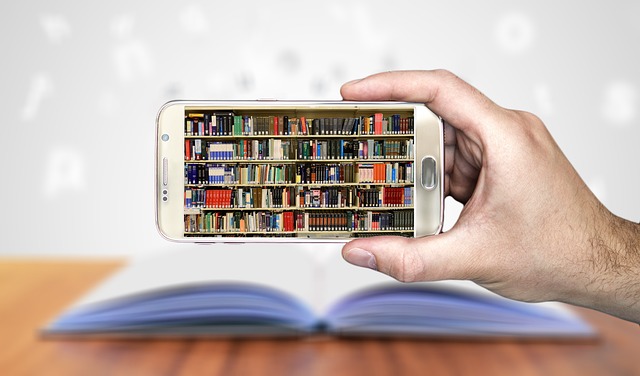From Concept to Reality: How to Build a Digital Library and Curate Valuable Resources
Understanding the Concept: What is a Digital Library and Why is it Important?
In today’s digital age, the concept of a digital library has gained significant importance. A digital library is a collection of digital resources that are accessible online, providing users with the ability to search, access, and retrieve information from anywhere at any time. It encompasses a wide range of materials, including books, journals, articles, audiovisual content, and more. The importance of digital libraries lies in their ability to democratize access to knowledge, preserve cultural heritage, and facilitate research and learning.
One of the key advantages of digital libraries is their accessibility. Unlike traditional libraries, which are limited by physical space and operating hours, digital libraries can be accessed by anyone with an internet connection. This means that individuals in remote areas or those with physical disabilities can now access valuable resources that were previously out of reach. According to a survey conducted by the Pew Research Center, 87% of Americans believe that access to the internet is essential for personal success, highlighting the importance of digital libraries in bridging the digital divide.
Furthermore, digital libraries play a crucial role in preserving cultural heritage. By digitizing rare and fragile materials, such as ancient manuscripts or historical photographs, these resources can be preserved for future generations. For example, the British Library’s digitization project has made over 1 million images freely available online, allowing users to explore and engage with their vast collection. This not only ensures the longevity of these materials but also enables researchers and scholars to study and analyze them without the risk of damage.
Planning and Designing: Step-by-Step Guide to Building a Digital Library
Building a digital library requires careful planning and designing to ensure its success. The first step is to define the purpose and scope of the library. This involves identifying the target audience, the types of resources to be included, and the goals and objectives of the library. For example, a digital library focused on academic research may prioritize scholarly articles and journals, while a public library may include a broader range of resources to cater to a wider audience.
Once the purpose is defined, the next step is to determine the technical requirements and infrastructure needed to support the digital library. This includes selecting the appropriate software and hardware, establishing a robust hosting platform, and ensuring data security and backup measures are in place. It is essential to consider scalability and future growth when designing the infrastructure to accommodate increasing volumes of content and users.
After the technical aspects are addressed, the focus shifts to content selection and organization. Curating valuable resources is a critical step in building a digital library. This involves identifying reliable sources, evaluating the quality and relevance of the content, and ensuring copyright compliance. Collaboration with subject matter experts and librarians can help in selecting resources that align with the library’s objectives and meet the needs of the target audience.
Curating Valuable Resources: Strategies for Selecting and Organizing Content
Curating valuable resources is a complex task that requires careful consideration and strategic planning. One strategy is to establish clear selection criteria based on the library’s objectives and target audience. This can include factors such as relevance, authority, accuracy, and currency of the content. For example, a digital library focused on medical research may prioritize peer-reviewed articles from reputable journals.
Another strategy is to leverage user feedback and engagement to curate content. By analyzing user behavior, preferences, and search patterns, librarians can gain insights into the types of resources that are most valuable to users. This can help in identifying gaps in the collection and making informed decisions about future acquisitions.
Organizing the content in a digital library is equally important. Implementing a robust metadata schema and classification system allows users to easily navigate and discover resources. This involves assigning descriptive metadata, such as title, author, subject, and keywords, to each resource. Additionally, implementing a comprehensive search functionality, including advanced search options and filters, enhances the user experience and improves discoverability.
Bringing it to Life: Implementing and Maintaining a Successful Digital Library
Implementing and maintaining a successful digital library requires ongoing effort and dedication. Regular updates and additions to the collection are essential to keep the library relevant and up-to-date. This can be achieved through partnerships with publishers, content providers, and other libraries to ensure a steady stream of new resources.
User engagement and feedback are crucial for the continuous improvement of a digital library. Conducting user surveys, analyzing usage statistics, and monitoring user behavior can provide valuable insights into user needs and preferences. This information can be used to make informed decisions about content selection, organization, and user interface improvements.
Furthermore, ensuring the long-term preservation and accessibility of the digital library’s content is vital. Implementing robust backup and disaster recovery measures, as well as adhering to digital preservation standards, helps safeguard the library’s resources for future generations. Collaboration with other institutions and participation in digital preservation initiatives can also contribute to the long-term sustainability of the library.
In conclusion, building a digital library and curating valuable resources requires a comprehensive understanding of the concept, careful planning and designing, strategic content selection and organization, and ongoing implementation and maintenance. By embracing the potential of digital libraries, we can democratize access to knowledge, preserve cultural heritage, and empower individuals to explore and learn in the digital age.




